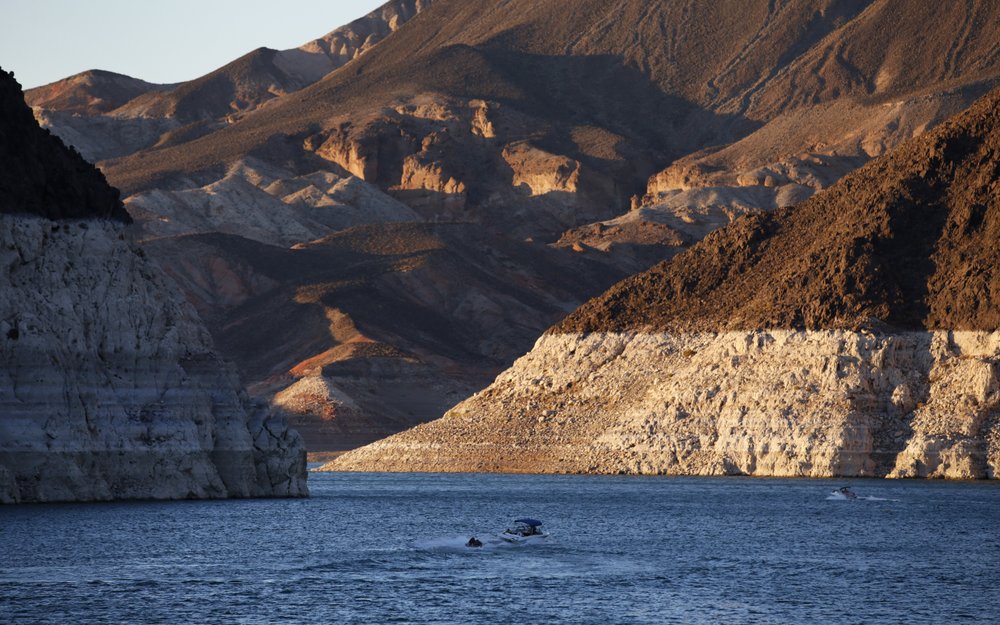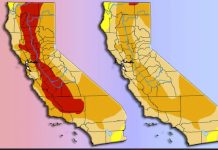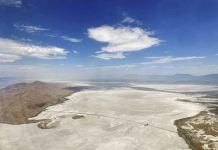
There’s a chance water levels in the two largest man-made reservoirs in the United States could dip to critically low levels by 2025, jeopardizing the steady flow of Colorado River water that more than 40 million people rely on in the American West.
After a relatively dry summer, the U.S. Bureau of Reclamation released models on Tuesday suggesting looming shortages in Lake Powell and Lake Mead — the reservoirs where Colorado River water is stored — are more likely than previously projected.
Compared with an average year, only 55% of Colorado River water is flowing from the Rocky Mountains down to Lake Powell on the Utah-Arizona line. Due to the below-average runoff, government scientists say the reservoirs are 12% more likely to fall to critically low levels by 2025 than they projected in the spring.
“This is a pretty significant increase over what was projected in April due to the declining runoff this year,” hydrologist Carly Jerla said.
The forecast could complicate already-fraught negotiations between Arizona, California, Colorado, New Mexico, Nevada, Utah, Wyoming and Mexico over future shares of the river that supplies their cities and farms. Those talks will draw up new agreements by 2026 over use of the river that’s under siege from climate change and prolonged drought.
Some of urban and agricultural water users have been forced to conserve water to secure the river long term, but it remains overtapped. And as cities like Phoenix and Las Vegas keep growing, the region is only getting thirstier.
“We know that warmer temperatures have contributed to the drought of the last 21 years, and we know that they have exacerbated it,” Bureau of Reclamation Commissioner Brenda Burman said.
Unlike the 24-month projections that the agency uses to allocate water to the seven states and Mexico, the models released Tuesday simulate various weather and usage patterns to help water users prepare for different scenarios.
Scientists use what’s called the Colorado River Simulation System to project future levels of the two reservoirs. They employed “stress testing” techniques based on river flows since 1988 to determine potential shortages if drought conditions persist.
Arizona, Nevada and Mexico agreed to cuts for the first time under a drought contingency plan signed last year. The water level in Lake Mead sits at 1,083 feet (330 meters). When projections drop below 1,075 feet (328 meters), Nevada and Arizona will face deeper cuts mandated by the plan.
Stress test models suggest a 32% chance that Lake Mead will fall below 1,075 feet by 2022 and a 77% chance by 2025. The model’s median estimates indicate Lake Mead will drop by 35 feet (11 meters) by 2026.
The water level in Lake Powell is at 3,598 feet (1,097 meters), and estimates suggest it could drop by 50 feet (15 meters) by 2026.
Burman said the models provide valuable information to cities and farms preparing for the future as drought persists and average temperatures trend upward. She said drought contingency plans are an effective mechanism to address the projected shortages — for now.
“I think what the projections are showing us is we have greater uncertainty than we did last year,” she said.
Are we heading to the next dust bowl:
More drought and water scarcity news on AP News, Strange Sounds and Steve Quayle.













West coast has the Pacific Ocean. Build a desalinization plant in Malibu, where Hollyweirdos have their second homes. Right by the Malibu Colony. Perfect location.
The hole in ground could have caused by high frequency such as 5G. The high frequency ignited limestone causing the hole.
What have we learned about computer models concerning Climate Change and the fake Covid pandemic? One, they lie. Two, they’re wrong. Think about it…
The truth about Lake Mead is that DHS demanded they drop the water level for anti-terrorism purposes. Less water pressure on the dam.
Then past presidential administrations began giving more water to Mexico.
Last step: blame global warming or super drought, or what have you.
Dont worry, marxists will drink blood if they run out of water. My advice—Buy a ranch, on an aquifer, with a deep well.
Dont buy into the writer’s “globull” warming tone. It’s horseshit—as usual. Same thing that comes out of a leftist’s mouth every time they open it.